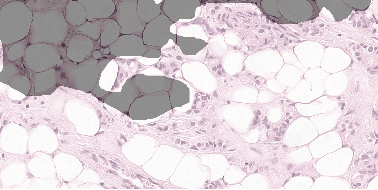Philip Q. Nelson
Using Large Language Models to Accelerate Communication for Users with Severe Motor Impairments
Dec 03, 2023



Abstract:Finding ways to accelerate text input for individuals with profound motor impairments has been a long-standing area of research. Closing the speed gap for augmentative and alternative communication (AAC) devices such as eye-tracking keyboards is important for improving the quality of life for such individuals. Recent advances in neural networks of natural language pose new opportunities for re-thinking strategies and user interfaces for enhanced text-entry for AAC users. In this paper, we present SpeakFaster, consisting of large language models (LLMs) and a co-designed user interface for text entry in a highly-abbreviated form, allowing saving 57% more motor actions than traditional predictive keyboards in offline simulation. A pilot study with 19 non-AAC participants typing on a mobile device by hand demonstrated gains in motor savings in line with the offline simulation, while introducing relatively small effects on overall typing speed. Lab and field testing on two eye-gaze typing users with amyotrophic lateral sclerosis (ALS) demonstrated text-entry rates 29-60% faster than traditional baselines, due to significant saving of expensive keystrokes achieved through phrase and word predictions from context-aware LLMs. These findings provide a strong foundation for further exploration of substantially-accelerated text communication for motor-impaired users and demonstrate a direction for applying LLMs to text-based user interfaces.
Detecting Cancer Metastases on Gigapixel Pathology Images
Mar 08, 2017



Abstract:Each year, the treatment decisions for more than 230,000 breast cancer patients in the U.S. hinge on whether the cancer has metastasized away from the breast. Metastasis detection is currently performed by pathologists reviewing large expanses of biological tissues. This process is labor intensive and error-prone. We present a framework to automatically detect and localize tumors as small as 100 x 100 pixels in gigapixel microscopy images sized 100,000 x 100,000 pixels. Our method leverages a convolutional neural network (CNN) architecture and obtains state-of-the-art results on the Camelyon16 dataset in the challenging lesion-level tumor detection task. At 8 false positives per image, we detect 92.4% of the tumors, relative to 82.7% by the previous best automated approach. For comparison, a human pathologist attempting exhaustive search achieved 73.2% sensitivity. We achieve image-level AUC scores above 97% on both the Camelyon16 test set and an independent set of 110 slides. In addition, we discover that two slides in the Camelyon16 training set were erroneously labeled normal. Our approach could considerably reduce false negative rates in metastasis detection.
 Add to Chrome
Add to Chrome Add to Firefox
Add to Firefox Add to Edge
Add to Edge